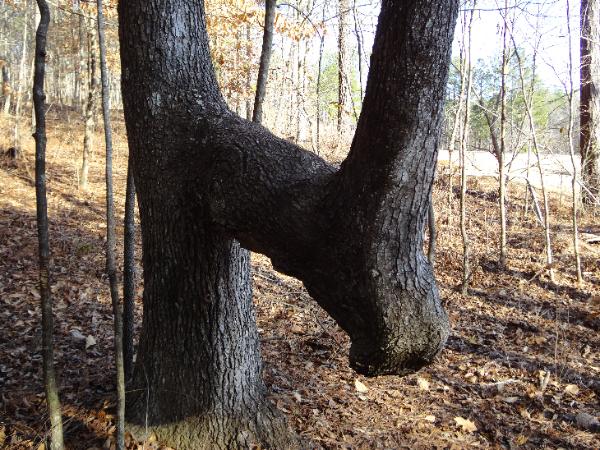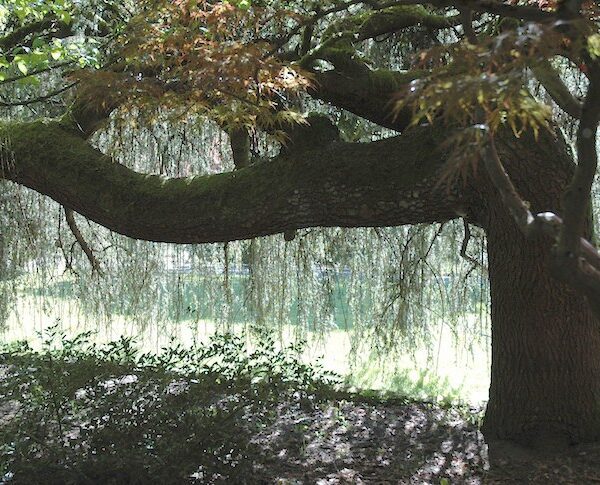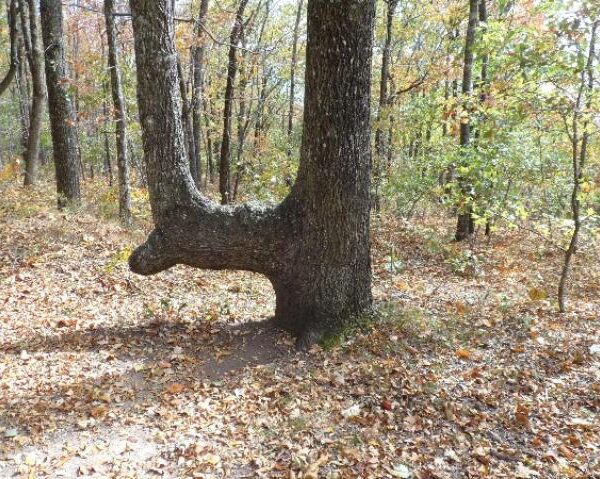
Nowadays, it's tough to think about going anywhere without a GPS. Many of us depend a lot on modern technology for even the easiest things, especially when we're trying to find our way in new places. We've gotten so used to our gadgets that it's not shocking that scientists have started linking the human brain to the internet. This shows just how much technology influences our everyday lives. Sure, maps can still be useful tools. But it makes you wonder — what did people do before GPS or even paper maps were around?
How did travelers, hunters, or explorers find their way through forests, mountains, or large areas of land without any roads or signs? It turns out that nature had many secrets. One of these secrets is something you might have noticed but never really understood: bent trees. All over the United States, you can still see trees with strange shapes — trunks that bend sharply, curve in odd ways, or twist in a way that seems unusual. While some of these trees might be shaped by storms or other natural events, many of them are not just random. They are intentional markers made hundreds of years ago.
Long before European settlers came, Native American tribes used the natural landscape to create tools for navigation. One of their most amazing methods was bending young saplings to grow in certain shapes, turning them into what we now call “trail trees.” These altered trees acted as permanent signs to help guide people safely through tough areas. They directed travelers to important resources like fresh water, food, shelter, and safe routes through mountains and forests.
As the trees aged, they kept the shapes they were trained into — their trunks bending sideways before curving back up toward the sky. To someone walking by today, they might just seem like strange trees. But for Native Americans and early explorers, these trees were crucial for survival. Unfortunately, most people today don't recognize the historical importance of these natural markers. As cities and towns expanded and technology took over traditional knowledge, the meaning behind these trees was mostly forgotten. Yet, they still stand — silent, living reminders of a time when humans worked with nature to find their way in the world.

Now, you might be curious about how to distinguish between a tree that bends naturally and one that has been shaped by people. Luckily, there are some important details that can help you figure it out.
In the forest, many trees grow at strange angles all on their own. But, man-made trail trees often have specific features that are easy to spot once you know what to look for. For instance, trees that were shaped by Native Americans usually have a noticeable “nose” or notch — a bump that sticks out at the end of the bend. This bump was made by putting a small branch or peg into a hole in the tree and letting it grow around that object.
Besides the “nose,” you might also see scars or marks on the upper part of the bend — signs of where leather straps or bindings were used to keep the tree in place while it was growing. These scars, along with the consistent angle and shape of the bend, are strong hints that the tree was intentionally shaped by people, not just by nature.

Many of these amazing trees are now between 150 and 200 years old, serving as living reminders of Native American culture, survival, and their deep connection to nature. Sadly, they are facing danger. As human populations grow, deforestation happens, and land development continues, a lot of these historical trees are being chopped down or lost for good. When people clear land for roads, houses, and businesses, they might not even notice that they are destroying something irreplaceable.
That's why organizations like the Mountain Stewards have taken action. This group has set up an online database and an interactive map that shows the exact spots of over 1,000 trail trees all over the country. Their mission is to protect these amazing living artifacts and to spread the word about their history and importance. Because of efforts like this, more people — both young and old — are starting to appreciate these hidden gems in our forests. With more knowledge, we can develop a deeper respect for the land and the cultures that existed before us.
So, the next time you're out in the woods and you notice a tree that looks oddly bent or shaped, don't just walk by. Take a moment to check it out. You might be looking at a living piece of American history — a trail marker made by people who really understood how to read the land.
Watch the video below to see a real-life example of a trail tree in Georgia. It's amazing to see how something as simple as a tree could once help entire communities navigate through the wilderness. Let's hope we can save these historic trees and the stories they tell — before they vanish forever.












